Related Research Articles

Emergency medical services (EMS), also known as ambulance services or paramedic services, are emergency services that provide urgent pre-hospital treatment and stabilisation for serious illness and injuries and transport to definitive care. They may also be known as a first aid squad, FAST squad, emergency squad, ambulance squad, ambulance corps, life squad or by other initialisms such as EMAS or EMARS.

A fire department or fire brigade, also known as a fire company, fire authority, fire district, fire and rescue, or fire service in some areas, is an organization that provides fire prevention and fire suppression services as well as other rescue services.
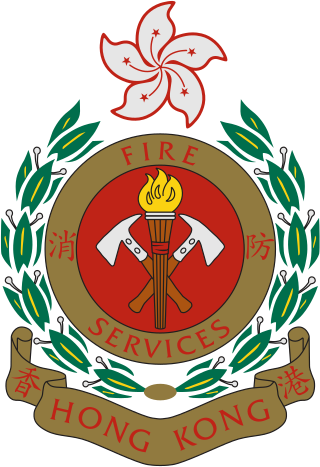
The Hong Kong Fire Services Department is an emergency service responsible for firefighting and rescue on land and sea. It also provides an emergency ambulance service for the sick and the injured and gives fire protection advice to the public. It is under the Secretary for Security who heads the Security Bureau.
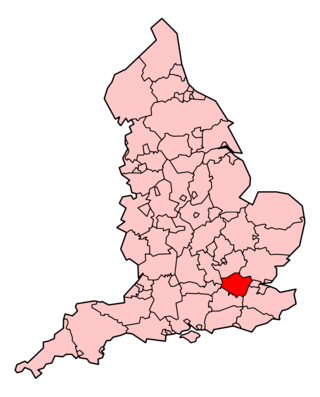
The London Ambulance Service NHS Trust (LAS) is an NHS trust responsible for operating ambulances and answering and responding to urgent and emergency medical situations within the London region of England. The service responds to 999 phone calls across the region, and 111 phone calls from certain parts, providing triage and advice to enable an appropriate level of response.

The London Fire Brigade (LFB) is the fire and rescue service for London, the capital of the United Kingdom. It was formed by the Metropolitan Fire Brigade Act 1865, under the leadership of superintendent Eyre Massey Shaw. It has 5,992 staff, including 5,096 operational firefighters and officers based at 102 fire stations.
The New Zealand Fire Service was New Zealand's main firefighting body from 1 April 1976 until 1 July 2017 – at which point it was dissolved and incorporated into the new Fire and Emergency New Zealand.

On the evening of 4 December 1957, two trains crashed in dense fog on the South Eastern Main Line near Lewisham in south-east London, causing the deaths of 90 people and injuring 173. An electric train to Hayes had stopped at a signal under the bridge, and the following steam train to Ramsgate crashed into it, destroying a carriage and causing the bridge to collapse onto the steam train. The bridge had to be completely removed; it was over a week before the lines under the bridge were reopened, and another month before the bridge was rebuilt and traffic allowed over it.
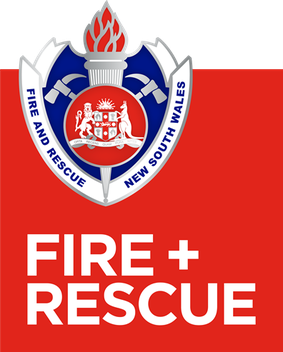
Fire and Rescue NSW (FRNSW) previously known as NSW Fire Brigades (NSWFB), is an agency of the Government of New South Wales, Australia. FRNSW is responsible for firefighting, rescue and HazMat services in the major cities, metropolitan areas and towns across New South Wales. Fire and Rescue NSW is the fourth largest urban fire service in the world, with over 6,800 firefighters serving at 335 fire stations throughout the state, supported by 465 administrative and trades staff and 5,700 community fire unit volunteers. FRNSW are the busiest fire service in Australia, attending over 124,000 incidents a year.

The fire services in the United Kingdom operate under separate legislative and administrative arrangements in England and Wales, Northern Ireland, and Scotland.

Devon and Somerset Fire and Rescue Service (DSFRS) is the statutory fire and rescue service covering the counties Devon and Somerset in South West England – an area of 3,924 square miles (10,160 km2). It serves a population of 1.75 million, and is the fifth largest fire and rescue service in the United Kingdom.
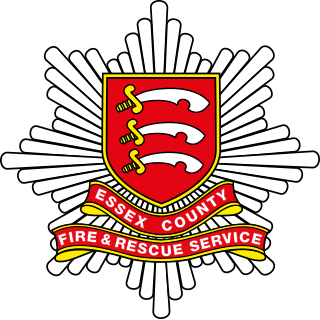
Essex County Fire and Rescue Service (ECFRS) is the statutory fire and rescue service for the county of Essex in the east of England, and is one of the largest fire services in the country, covering an area of 1,338 square miles (3,470 km2) and a population of over 1.7 million people.

Royal Berkshire Fire and Rescue Service (RBFRS) is a statutory fire and rescue service covering the area of the ceremonial county of Berkshire in England. The fire service was formerly administered by Berkshire County Council, but when that was abolished the service became the responsibility of the Royal Berkshire Fire Authority, made up of representatives from the six unitary authorities of Bracknell Forest Borough Council, Reading Borough Council, Royal Borough of Windsor and Maidenhead, Slough Borough Council, West Berkshire Council, and Wokingham Borough Council.

Kent Fire and Rescue Service is the statutory fire and rescue service for the administrative county of Kent and the unitary authority area of Medway, covering a geographical area south-east of London, to the coast and including major shipping routes via the Thames and Medway rivers. The total coastline covered is 225 km ; it has 55 fire stations, and four district fire safety offices. The FRS provides emergency cover to a population of nearly 2 million.
Emergency Medical Service in Germany is a service of public pre-hospital emergency healthcare, including ambulance service, provided by individual German cities and counties. It is primarily financed by the German public health insurance system.

Cornwall Fire and Rescue Service is the statutory fire and rescue service covering Cornwall, England. As of April 2019, the service employs over 400 retained firefighters, 203 full-time firefighters, plus 170 support and administrative staff. Created under the Fire Services Act 1947 as "Cornwall County Fire Brigade", the name changed to "Cornwall Fire and Rescue Service" on 1 October 2009.
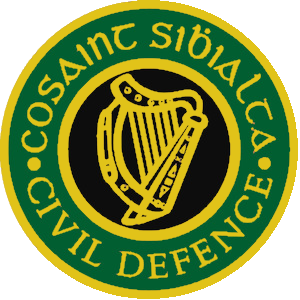
Civil Defence Ireland is the national civil defence organisation of Ireland. It is a statutory agency of the Irish Department of Defence and is administered by local authorities. It was established in 1951 in response to the threat of nuclear disaster posed by the atomic bomb following World War II. Today it is an emergency response and rescue agency whose purpose is to provide aid, assistance and relief in times of emergency or natural disaster. It may also support primary emergency response agencies namely the Garda Síochána, HSE National Ambulance Service, and local authority fire services when requested. Civil Defence Ireland consists almost entirely of volunteers, numbering 2500 as of May 2023.

Lincolnshire Fire and Rescue (LFR) is the statutory fire and rescue service serving the non-metropolitan county of Lincolnshire in the East Midlands Region of England. This does not include North Lincolnshire and North East Lincolnshire, which are covered by Humberside Fire and Rescue Service.

A mass casualty incident describes an incident in which emergency medical services resources, such as personnel and equipment, are overwhelmed by the number and severity of casualties. For example, an incident where a two-person crew is responding to a motor vehicle collision with three severely injured people could be considered a mass casualty incident. The general public more commonly recognizes events such as building collapses, train and bus collisions, plane crashes, earthquakes and other large-scale emergencies as mass casualty incidents. Events such as the Oklahoma City bombing in 1995, the September 11 attacks in 2001, and the Boston Marathon bombing in 2013 are well-publicized examples of mass casualty incidents. The most common types of MCIs are generally caused by terrorism, mass-transportation accidents, fires or natural disasters. A multiple casualty incident is one in which there are multiple casualties. The key difference from a mass casualty incident is that in a multiple casualty incident the resources available are sufficient to manage the needs of the victims. The issue of resource availability is therefore critical to the understanding of these concepts. One crosses over from a multiple to a mass casualty incident when resources are exceeded and the systems are overwhelmed.

The Scottish Fire and Rescue Service is the national fire and rescue service of Scotland. It was formed by the merger of eight regional fire services in the country on 1 April 2013. It thus became the largest fire brigade in the United Kingdom, surpassing the London Fire Brigade.
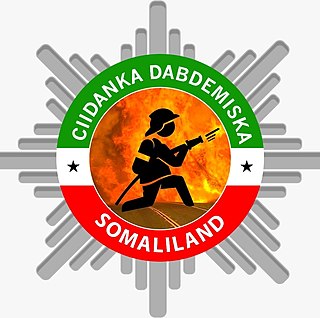
The Somaliland Fire Brigade It is a force for firefighting disasters, human safety and other national services related to the Somaliland Armed Forces, a new force throughout the Republic of Somaliland. National Fire Brigade was established in 2014, mainly composed of young crew and an emergency response agency.
References
- ↑ "London Fire Brigade - Exercise Unified Response". London-fire.gov.uk.
- ↑ "Tube disaster exercise: 'Tower collapses into station'". Bbc.co.uk. 29 February 2016.
- 1 2 "Fire crews mock up tube station collapse to train for emergency". The Guardian . 29 February 2016.
- ↑ "Emergency crews take part in a graphic disaster mock-up, in pictures". Telegraph.co.uk.
- ↑ "Crews Face 'Blood-Soaked' Tube Carriages As Part Of Biggest Drill Ever Held In London". HuffPost UK. 29 February 2016.
- ↑ "Ambulance crews to treat over 1,000 patients in Exercise Unified Response". London Ambulance Service. Archived from the original on 30 June 2016.
- ↑ Laura Oakley (14 March 2016). "exercise unified response Archives - British Red Cross - Blog". Blogs.redcross.org.uk. Retrieved 23 June 2017.
- ↑ "St John Ambulance provides support for disaster response drill". Sja.org.uk. Retrieved 23 June 2017.